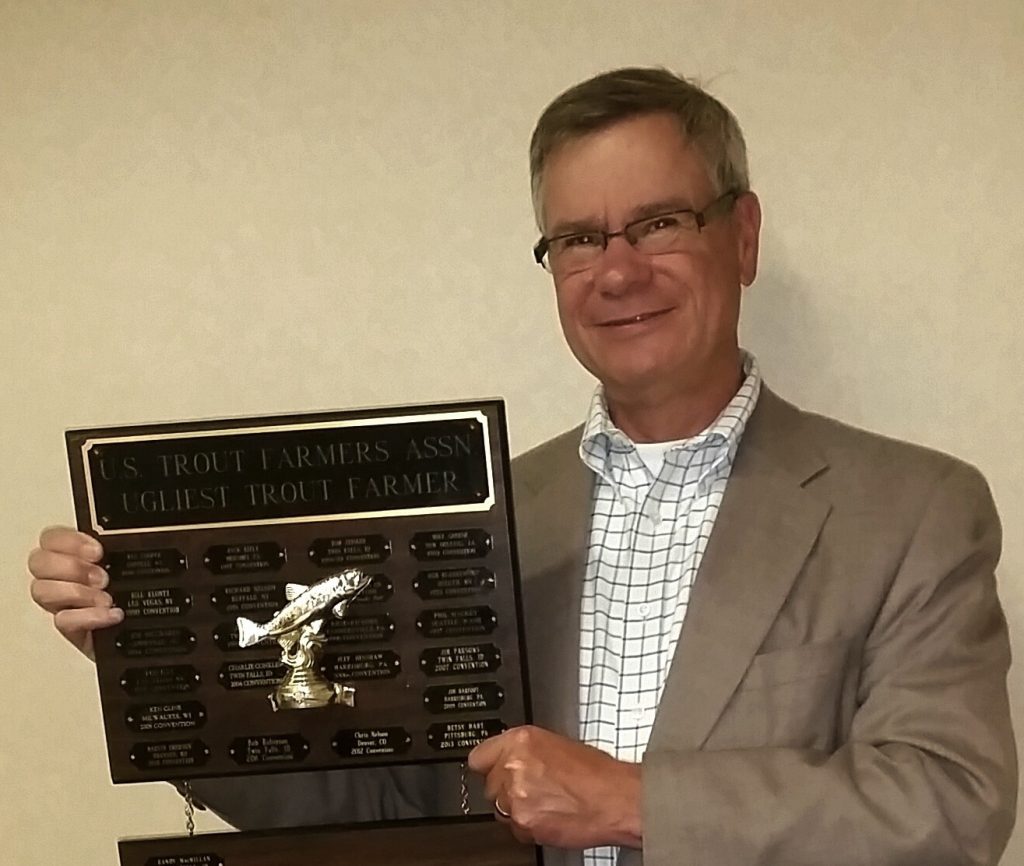
US Trout Farmers Celebrate 60th Anniversary
October 31, 2014
By Nagaraj G. Chatakondi Kenneth B. Davis and Brian C. Peterson
 Over 100 delegates attended the US Trout Farmers Association and Idaho Aquaculture Association trade show and conference. The conference focused on issues ranging from the latest on cold water vaccine development to the integration of aquaponics.
Over 100 delegates attended the US Trout Farmers Association and Idaho Aquaculture Association trade show and conference. The conference focused on issues ranging from the latest on cold water vaccine development to the integration of aquaponics.At its 2014 annual conference at Twin Falls Idaho, the “Trout Capital of America,” the US Trout Farmers Association (USTFA), the first and oldest aquaculture trade association in the US, celebrated its 60th birthday!
This year’s event marked the second time the USTFA and Idaho Aquaculture Association (IAA) partnered to host the National Conference. The IAA, founded in 1989, also celebrated a milestone – its 25th anniversary.
Over 100 delegates participated in the three day event which included the conference, trade show, Presidents Reception, and a full day of tours to aquaculture related sites.
The conference focused on important industry issues ranging from the latest on coldwater disease vaccine development to the integration of aquaponics in cold flowing water systems. “Trials of a bacterial coldwater disease vaccine developed right here at the University of Idaho by Dr. Ken Cain have produced some very promising results,” said Gary Fornshell, Extension Educator with the University of Idaho, who was also responsible for putting together the conference program. “It was lucky that there was an outbreak of the disease during the trials which allowed the vaccine to really get put to the test. Now they will be working towards commercialization of this vaccine.”
Enjoying the full sun and temperatures in the upper 70s, tour participants stopped at White Springs Trout Farm, Hagerman National Fish Hatchery, University of Idaho Hagerman Fish Culture Experiment Station and Magic Springs Trout Farm. White Springs and Magic Springs allowed tour participants a firsthand look at the spring-fed concrete raceway type commercial production sites that characterize Idaho’s sizeable trout aquaculture industry. Recently installed recirculating aquaculture technologies that aren’t common at commercial sites, such as Cornell dual-drain tanks, liquid oxygen and degassing systems, were on full display at Hagerman National Fish Hatchery. For one last taste of local product, sturgeon tacos with all the fixings were served for lunch at Hagerman Fish Culture Experiment Station.
US trout aquaculture has come a long way since the formation of the USTFA. This year’s conference provided a great opportunity to celebrate the history and past achievements as well as underscore the latest developments in the industry. With the dedicated people involved and the USTFA and IAA leading the way, the next 60 years will be just as exciting as the previous 60.
— Jeff Eastman
Jeff Eastman, BSc Fisheries and Aquaculture, is a Business Development Specialist for the Province of Manitoba, Canada. He has worked for over seven years implementing extension and industry development programs for freshwater aquaculture. He can be reached at jeff.eastman@gov.mb.ca.
Disease management through selective breeding
One of the many highlights of the conference focused on bacterial coldwater disease management highlighting on-farm performance studies of a rainbow trout line selectively bred for improved resistance to the disease.
Several groups including Troutlodge, the Utah Department of Natural Resources and Clear Springs Foods have been running trials to evaluate the performance of new lines of rainbow trout developed by the United States Department of Agriculture – Agricultural Research Service (USDA-ARS) at the National Center for Cool and Cold Water Aquaculture in West Virginia.
The presentation focused on the results of trials at Clear Springs and was co-presented by Dr. Scott LaPatra, Director of Research and Development with Clear Springs Foods and Dr. Tim Leeds, Research Geneticist (Animals) from the USDA-ARS. Clear Springs has been working with two new strains: one strain to have resistance to coldwater disease and the other to have improved growth. The new strains have been developed with breeding seed stock from the Pacific Northwest including Donaldson and Shasta type rainbow trout and selecting for desirable traits.
“We like the new fish,” said Dr. LaPatra. “Working with Dr. Tim Leeds and the ARS has been a great experience for our company. We plan to continue commercial trials with ARS fish in March and April.” The ongoing evaluation of the new lines of rainbow trout being developed by the USDA-ARS represents excellent collaboration between industry and government research which will undoubtedly lead to advancements in the industry.
— Jeff Eastman





